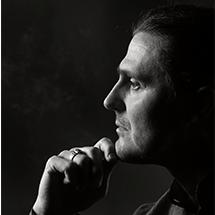“Formal” relationships originate from the Feminine principle and are built under the unspoken leadership of the woman. Both participants naturally, with instinctive zeal, strive to conform to the forms adopted in the society, observing all legal norms and engaging the state as a third party in relations with each other. Such relations are built on the principle of pluralism (equality) and are united by the value of material resources in order to jointly own them. At the same time, a more natural tendency will be the inclination of men to earn income, and women — to spend money and create debt. However, since in this type of relationship their governing principle is equality, when the man weakens, it becomes possible to exchange roles. In this case, on the contrary, the woman will tend to earn, while the man will spend and create debts.
“Image oriented” relations originate from the Feminine principle and are built under the unspoken leadership of the woman. Both participants naturally try to conform to the forms adopted in the society and are guided by the principles of equality or decentralization, depending on the situation. They are united both by the value of joint material resources and by joint efforts to produce their product. At the same time, the man is more inclined to position the product (or himself) in the society, and the woman focuses on the presentation of it (or herself). By virtue of the governing principle, the weaker the man and the stronger the woman become, the more they will tend to flip their roles.
“Creative” relationships originate from the Feminine principle and are built under the unspoken leadership of the woman. Both participants naturally rely on the experience of their internal powers and are guided by the principle of decentralization — the reason why the man in this relationship is still subordinate to the woman, and their product — to the formats accepted by society. They are united by the production process, which also includes the birth and upbringing of children. The man is predominantly engaged in ensuring production processes, the woman multiplies the product itself, but when the man weakened, their functional roles may change.
“Committed” relationships originate from the Masculine principle and are built under the clear leadership of the man. Both participants naturally rely on the experience of their inner powers, complying to the principle of centralization. They are united by man’s goal, and while the man achieves it, his woman hones ways to help the man reach new results and preserve the ones already achieved. The governing principle does not imply the possibility of flipping the male and female functions, since the man, keen on achieving his goal, is not inclined to obey the woman.
“Dignified” relationships originate from the Masculine principle and are built under the clear leadership of the man. They start with the principle of centralization and move to hierarchy as they develop. The participants, initially united by the goal, later gradually become more and more interested in the higher sense. It is natural for both of them to devote their relationship to the strengthening of Essence (Rod) under the guidance of a teacher. Both are in service: she — to him, he — to his superior, an authoritative man for himself, e.g. the head of a stronger structure. At the same time, the man forms the relationships in his family in a way that most closely matches either the goal of his superior, or the sense he is promoting, in order to ultimately strengthen the highest Essence above him — his Rod.
“Higher” relationships originate from the Masculine principle and are built under the clear leadership of the man. In such a relationship, the participants are guided by the principle of hierarchy. They are united by the sense coming from the Higher Essence (Rod). It is natural for both of them to devote their relationship to the strengthening of Rod under the guidance of a superior. A man completely sacrifices himself to that Higher Essence, which he follows as a source of the Higher Light, and thanks to which he receives knowledge of the laws of life. The woman completely sacrifices herself to the man, doing everything that he entrusts her, thanks to which she is purified so much that she obtains the capability of subtle vision, with which she helps the man to manifest higher knowledge and to receive support from the subtle powers. In fact, we are talking about a family of holy people, with whom the heads of clans consult.
* Hierarchy means “the right of sacrifice”. “Iera” in translation from ancient Greek means “sacrifice”.

What is the root cause and mechanism of resentment? What is its effect on the person against whom it is directed? How do you stop it once and for all?
